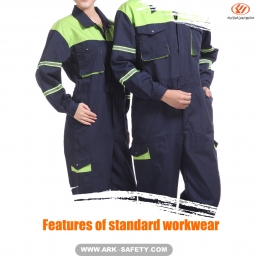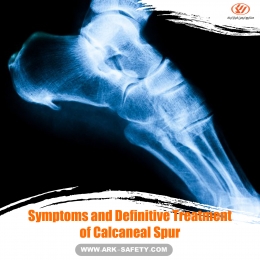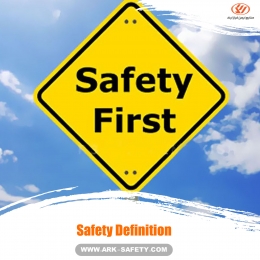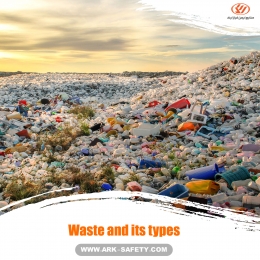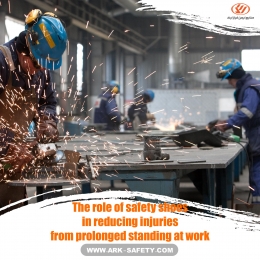Close
Waste and its types
Waste is all the residue from human and animal activities that is usually solid and unusable. According to the Law on Waste Management, this word refers to solids, liquids, and gases which are directly or indirectly the result of human activity and are considered useless by the producer.
Waste management is a set of coherent and systematic rules regarding the control of production, storage, collection, transportation, processing, and disposal of waste, following the best principles of public health, economy, resource protection, aesthetics, and other environmental requirements. By this definition, waste management includes all administrative, financial, legal, design, and engineering works in which the solutions to the problems of waste are left to the government by the residents. Solutions may involve a complex cross-sectoral relationship between disciplines such as political science, local and urban planning, geography, economics, public health, sociology, statistics, communications, and resource conservation, as well as engineering and materials science.
The term waste is general and includes all sources and types of different categories, compounds, and properties. Waste that should be discarded may be valuable to others or in another situation, but it is not valuable to the owner.
Types of waste
According to the Law on Waste Management, waste is divided into five groups, the types of which are given along with the relevant definitions:
- Normal waste: refers to all waste that is normally produced from the daily activities of humans in cities, villages, and beyond. Examples of this waste include household waste and construction waste.
- Medical waste (hospital): All infectious and harmful waste caused by hospitals, health centers, medical diagnostic laboratories, and other similar centers. Hazardous hospital waste is excluded from this definition.
- Special wastes (hazardous): All wastes that require special care due to the presence of at least one of the hazardous properties such as toxicity, pathogenicity, explosive or flammable, corrosive, and medical wastes. Also, some normal, industrial, and agricultural wastes that need special management are considered as special wastes.
- Agricultural waste: Waste from production activities in the agricultural sector, animal carcasses (livestock, poultry, and aquatic animals), rotten or unusable agricultural products.
- Industrial waste: All wastes from industrial and mining activities and refining, oil, gas, and petrochemical industries and power plants such as chips, spills, or industrial sludge.
Knowledge of waste composition is necessary to evaluate and select collection equipment, processing, design programs, etc. On the other hand, to identify hazardous wastes, it is necessary to have sufficient knowledge about the nature and composition of the wastes. The ratio between different combinations of municipal waste depends on several factors, including the level of well-being of the people, people`s perception of the consumption of various materials, and the method of packaging materials.
On-site waste handling, storage, and processing
The handling, storage, and processing of waste at the production site before it is collected are some of the most effective elements in waste management. It is important to understand this element because it will have important effects on public health, the next effective elements, and the public perception of the waste management system. It is necessary to pay attention to the safety points in handling, storage, and processing at the waste site because some wastes are hazardous and failure to observe safety issues at different stages of handling, storage, and processing at the waste site can lead to accidents.
Hazardous waste
As the name implies, hazardous waste, if not properly managed, can lead to irreparable damage to humans, animals, the environment, and facilities. Due to the importance of proper and principled management of such wastes, different countries have established special rules and regulations for its management in the stages of production, storage, handling, transportation, and final disposal.
The increasing growth of chemical products, as well as the consumption of these substances in various industrial processes, is a clear sign of an industrial society. Although the use of these substances in various fields has greatly contributed to economic development, studies and experiments show that there are significant adverse effects associated with these substances. The adverse effects of hazardous waste are very different and varied. Some of these effects are short-lived and severe. Acute poisoning by hazardous chemicals is a clear example of this type of effect. Experiences from other countries show that children in the age group of 1 to 10 years are affected. Another category of health effects is long-term effects. These complications become apparent over a relatively long period and are mostly related to toxic properties, bioaccumulation, carcinogenicity, mutagenicity, and chemicals. Accordingly, the chemical composition of a waste product must be identified in terms of toxicity, carcinogenicity, adverse effects on the fetus and infant, as well as mutations and possibly other side effects. It should be noted that what makes some hazardous wastes more important than others is the extent of their use and application in various sectors of the economy.
Just take the first step...

 Military Shoe
Military Shoe
 Safety Shoe
Safety Shoe
 Work Wear
Work Wear
 Office Shoe
Office Shoe
 Hiking Shoe
Hiking Shoe







